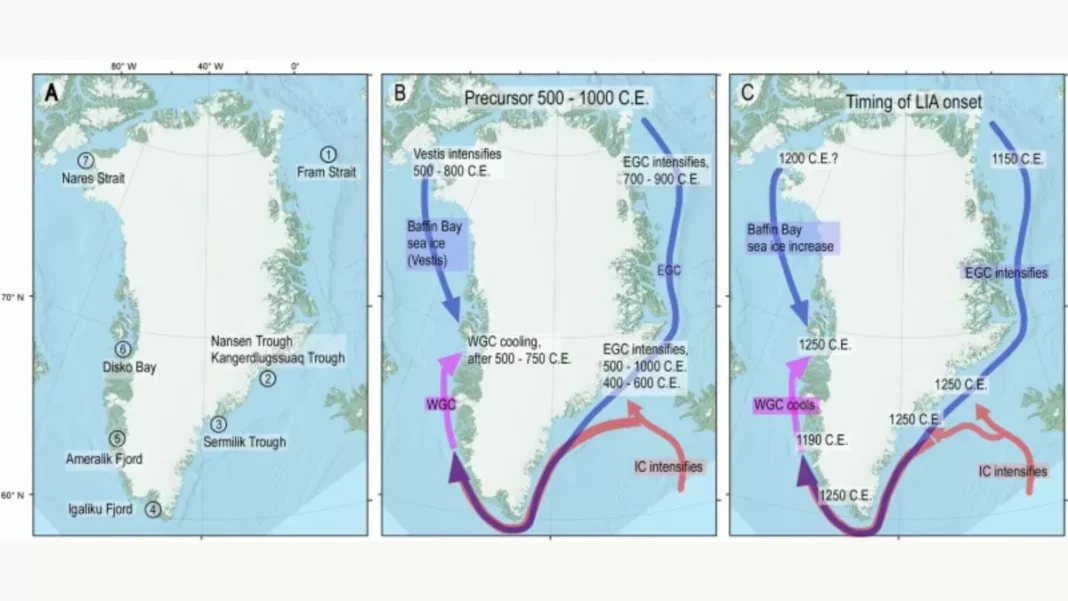In a groundbreaking study conducted by geologists Christopher Spencer, Ross Mitchell, and Thomas Gernon, ancient Greenland rocks have been discovered embedded in Icelandic cliffs. This discovery, made in 2025, has shed new light on the past climate anomalies and has provided crucial data for future climate predictions.
The study, which was published in the journal Nature, reveals that these rocks were transported by icebergs over 1500 years ago during the Late Antique Little Ice Age (LALIA). This period, which lasted from the 6th to the 9th century, was characterized by a significant expansion of glaciers and a drop in global temperatures.
The team of geologists, led by Spencer, Mitchell, and Gernon, used a combination of fieldwork, satellite imagery, and computer simulations to trace the origin of these ancient rocks. They found that the rocks were originally from Greenland and were carried by icebergs to Iceland during the LALIA.
This discovery is significant because it confirms the extent of glacial expansion during the LALIA, which was previously only speculated based on historical records and geological evidence. The presence of these rocks in Icelandic cliffs provides concrete evidence of the massive icebergs that were once present in the North Atlantic Ocean.
According to the researchers, the transportation of these rocks by icebergs also indicates the strength and direction of ocean currents during the LALIA. This information is crucial for understanding the dynamics of the Earth’s climate system and predicting future climate changes.
The study also highlights the role of icebergs in shaping the Earth’s landscape. As these massive blocks of ice moved across the ocean, they carved out deep valleys and fjords, leaving behind a unique geological record. The discovery of these ancient rocks in Icelandic cliffs is a testament to the power of icebergs and their impact on the Earth’s surface.
Moreover, this study has implications for the current climate crisis. The LALIA was a natural phenomenon caused by changes in solar activity and volcanic eruptions. However, the Earth is currently experiencing a rapid rise in global temperatures due to human activities such as burning fossil fuels and deforestation. The findings of this study serve as a reminder of the Earth’s natural climate variability and the need for urgent action to mitigate the effects of human-induced climate change.
The discovery of these ancient rocks also has significant implications for the future of Greenland’s ice sheet. As global temperatures continue to rise, the Greenland ice sheet is melting at an alarming rate, contributing to sea-level rise. By studying the past glacial expansion during the LALIA, scientists can better understand the potential impact of melting ice on sea levels and coastal communities.
The study conducted by Spencer, Mitchell, and Gernon is a testament to the power of scientific research and collaboration. By combining fieldwork, satellite imagery, and computer simulations, the team was able to uncover a crucial piece of the Earth’s climate puzzle. Their findings have opened up new avenues for research and have provided valuable insights into past climate anomalies.
In conclusion, the discovery of ancient Greenland rocks in Icelandic cliffs is a significant milestone in our understanding of the Earth’s climate history. This study has provided concrete evidence of glacial expansion during the LALIA and has shed light on the role of icebergs in shaping the Earth’s landscape. The findings of this study will serve as crucial data for future climate predictions and will help us better prepare for the challenges posed by the current climate crisis.



